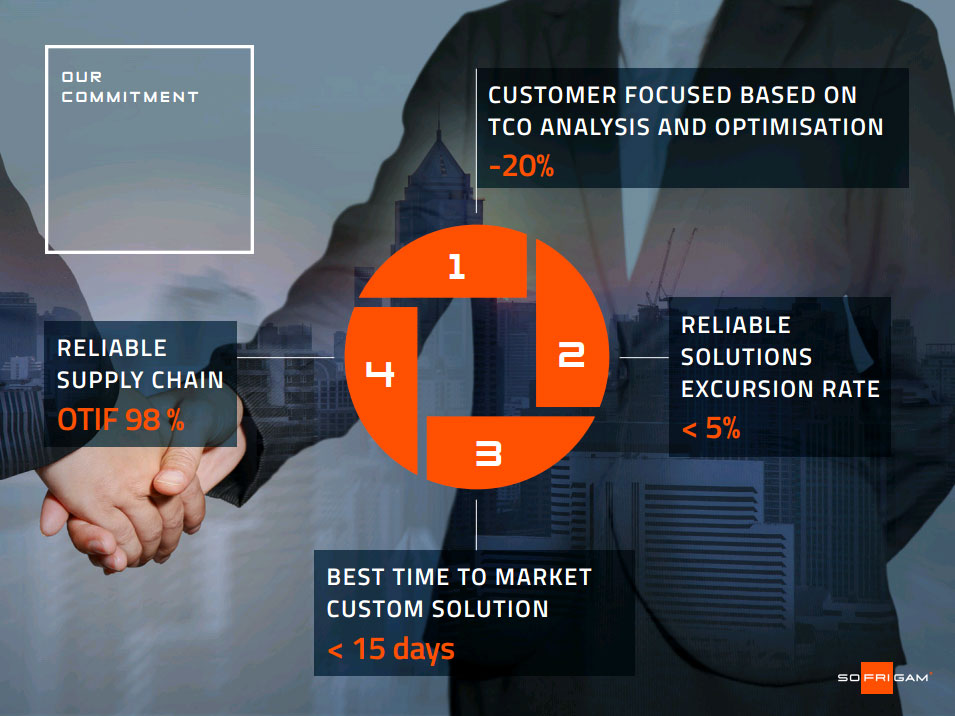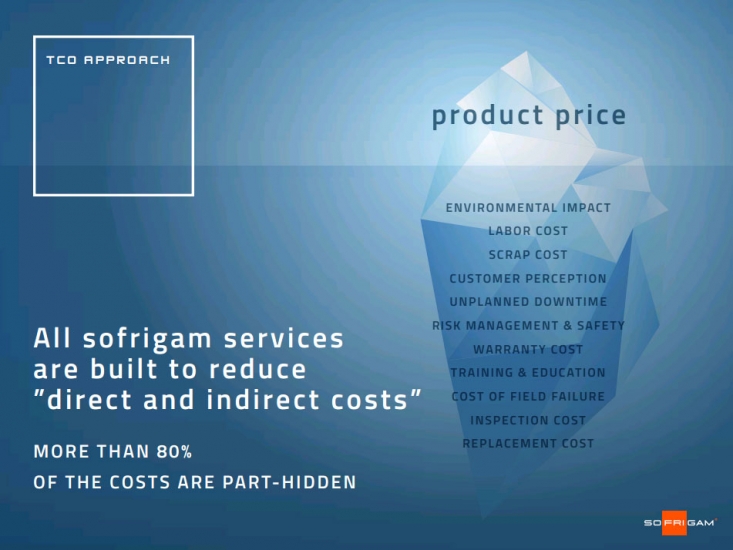The challenges and benefits of a TCO analysis
What are the challenges for a TCO analysis?
Where the purchase of one packaging solution is less expensive than another, this does not mean that over time its total cost (transport, handling, preparation, security, etc.) will be.
The main costs families to consider are:
- Initial cost of the solution,
- Cost of transport,
- Cost of storage,
- Cost of preparation,
- Cost of packaging,
- Cost of repatriation (reuse),
- Cost of deviation (cold chain shipping packaging with inadequate security),
- Cost of supplier after-sales service, etc.
A TCO analysis is complex to carry out because the numerous parameters to be considered are sometimes difficult to accurately record. However, it is an objective and precise method of comparison.
To optimise the precision of the study, it is appropriate to call upon the parties concerned (suppliers, hauliers, internal teams, end client, etc.).
This exercise is a practice that Sofrigam has implemented for all commercial dossiers for more than 3 years now. This TCO analysis expertise is offered to provide support to clients requesting it.
Let’s return to our theme. The first issue to address is to find out what parameters significantly impact the TCO for transportation via the cold chain by air:
- Total mass of the solution: packaging + energy source + products + accessories;
- External dimensions of the packaging solution;
- Net volume available for the shipped products;
- Initial cost of the cold chain shipping packaging solution (purchase / rental);
- Level of security of the shipping packaging solution (performance);
- Amount of packages to be shipped (per month/year).
These 6 parameters are essential and the TCO of a solution depends exclusively upon them. Changing just one of these parameters inevitably leads to a variation in the TCO of a cold chain shipping packaging solution.
For a particular client application, the idea is to reduce the mass, cost and external dimensions of a cold chain shipping packaging solution, to optimise its level of security and increase its payload size.
This seems easy, but, this exercise may be complex as a result of a variety of key factors:
- Cold chain shipping packaging solution development specifications (quality constraints, usage conditions, product filling rate, various constraints, etc.);
- Knowledge of client internal processes (storage, preparation, packaging, etc.);
- Technologically obsolete client equipment (usually assessed during Audits);
- Assessment of Logistical Circuits (e.g. Temperature Profile, use of cold room, loading area, etc.) versus actual conditions of use;
- Client Purchasing Strategy;
- Level of client communication with their teams and sub-contractors.
All of these parameters play a role whatever the type of transport (road, air, sea).
What are the objectives and the results of a TCO?
The objective of TCO analysts is to find the best compromise in order to best satisfy the clients requirements from a financial, quality and operational perspective.
The best way to achieve an optimum TCO is effective dialogue with the various parties involved (suppliers of cold chain shipping packaging, service providers, etc.) and the production of specifications correlated as much as possible to the actual use (to avoid oversizing).
This approach to assist financial decisions has allowed clients, for more than 3 years, to lower their TCO by an average of 20% over approximately 2 years.

Collaboration is the most efficient cross-sectional approach, allowing the client to:
- benefit from the advice and the expertise of their packaging supplier in writing the specifications;
- appreciate the impact of decisions made with regard to the nature of the packaging solutions in response to need and their affect on the TCO.
A significant number of companies in the pharmaceutical and technology sector opt for this approach, allowing them to simultaneously satisfy quality standards, specifications adapted to the situation and optimisation of the TCO of the adopted cold chain shipping packaging solution.
